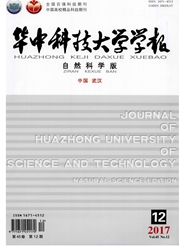

 中文摘要:
中文摘要:
针对室内移动机器人在智能服务任务中难以获得复杂环境语义的问题,通过设计云端语义库,实现基于语义获取框架的机器人语义地图构建,使机器人不仅掌握面向导航的环境几何描述,而且获得了复杂环境下基于丰富语义库的含物品关联归属关系的语义地图,解决了语义地图构建过程中语义信息添加可靠性低、地图更新存在误差及扩展性不足等问题.首先给出了一种语义库构建方案,基于支持向量机实现语义库分类形成子语义库,在子语义库基础上基于网络文本分类来提取关键特征点形成特征模型库,通过语义分类列表整合子语义库实现物品查询.其次,论述了面向智能服务任务的云端语义地图实现,基于多尺度图像分割与视差图分析,设计标注库与归属库描述物品关联归属关系.最后进行了有关语义地图构建及语义库分类效率的仿真实验与结果分析,验证了方法的有效性.
 英文摘要:
英文摘要:
In intelligent service task, it is difficult for indoor mobile robots to obtain semantic information of complex environment. A semantic map based on semantic acquisition structure of environment is constructed by designing cloud semantic database. The robot can not only get the geometric description of environment, but also obtain the semantic map which contains objects relationship based on rich semantic database of complex environment. It solves the low reliability of adding semantic information, the error of updating map and the lack of scalability in the process of constructing the semantic map. It begins by presenting a semantic database construction project. Then semantic sub-databases are obtained by classifying the semantic database based on SVM (support vector machine) algorithm. On the base of semantic sub-databases, the feature model database is formed by extracting key feature points based on network text classification. By combining the semantic sub-database with the semantic classification list, the objects can be identified. Secondly, the implementation of cloud semantic map for the intelligent service task is discussed. Based on the multi-scale image segmentation and the analysis of disparity map, annotation database and belonging database are designed to describe the belonging relationship between objects. Finally, the semantic map is constructed and the classification efficiency of semantic database is analyzed in simulation experiments to verify the validity of the method.
 同期刊论文项目
同期刊论文项目
 同项目期刊论文
同项目期刊论文
 期刊信息
期刊信息
